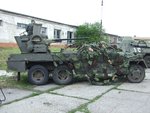Hello Viking
But we must recon the overclaiming factor, which IIRC was rather high at least early on amongst SBD crews, at least according to Lundstrom. But I also think that SBDs could look after themselves better than Vals, Skuas or Ju 87s.
Juha
But we must recon the overclaiming factor, which IIRC was rather high at least early on amongst SBD crews, at least according to Lundstrom. But I also think that SBDs could look after themselves better than Vals, Skuas or Ju 87s.
Juha

